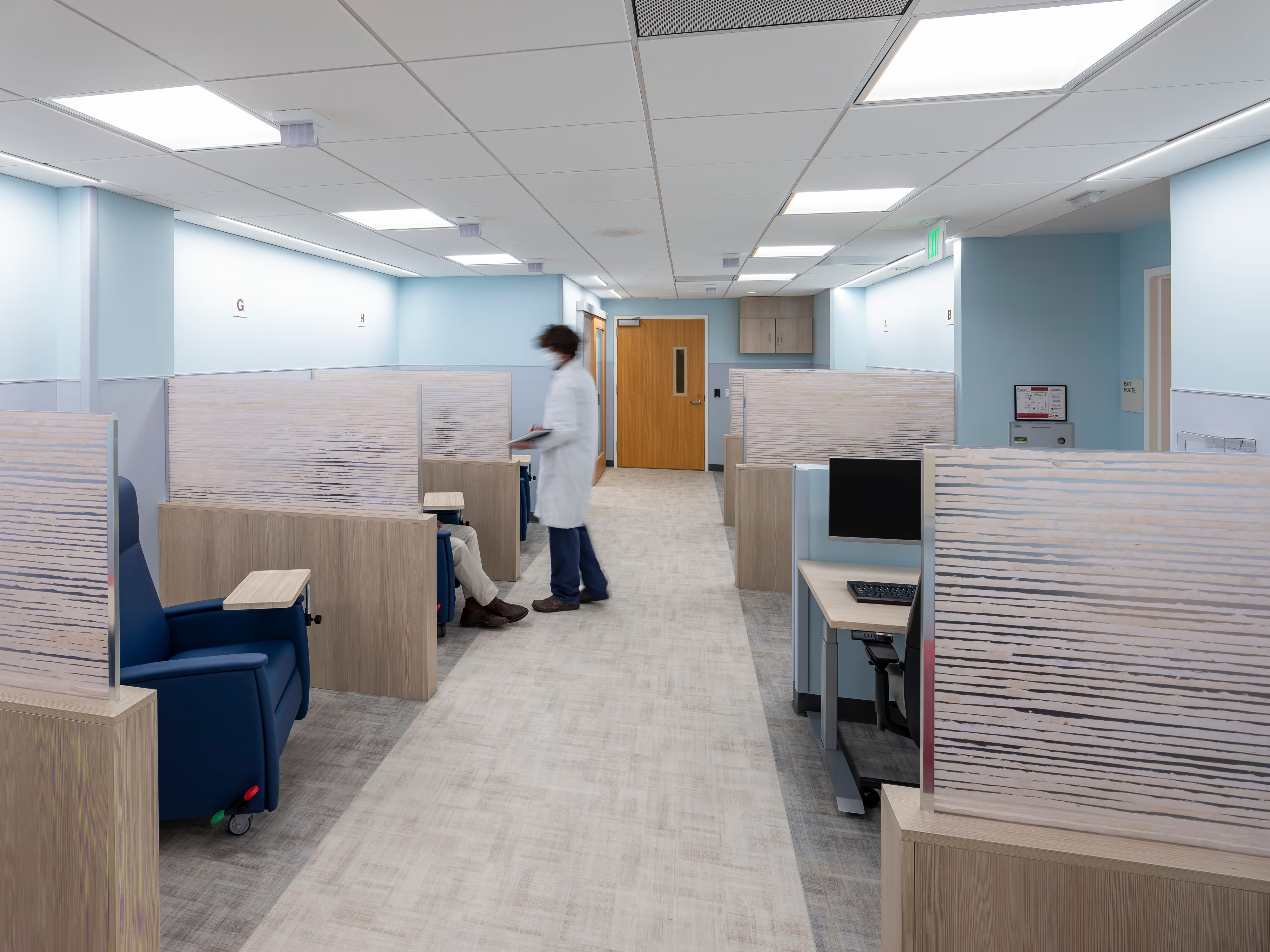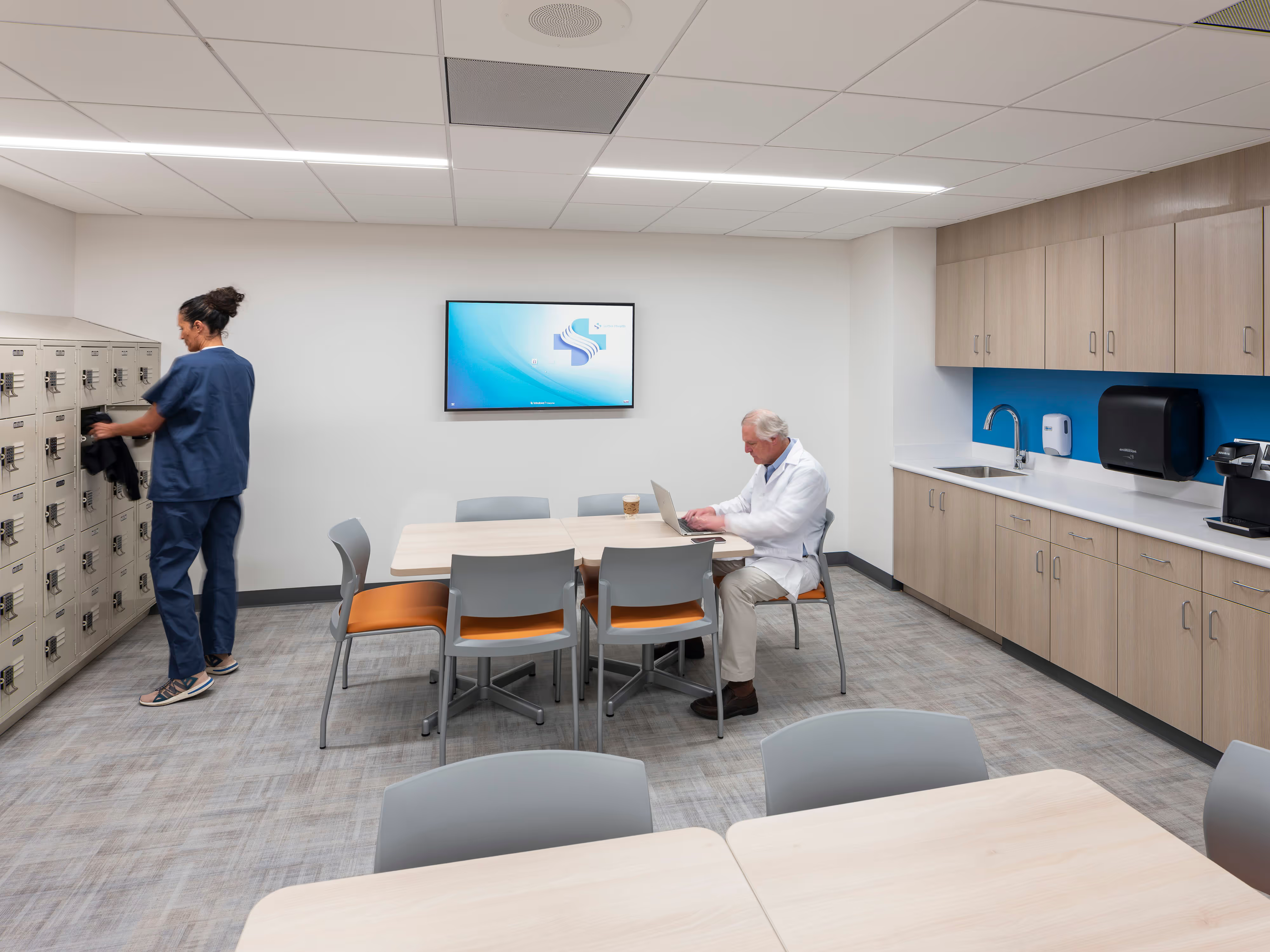The Emergency Department renovation at Sutter Health ABSMC has been a long time coming. As a critical healthcare space for the surrounding community, Sutter Health wanted to renovate, expand, and upgrade the facility for some time. However, the need to keep the emergency department operational at all times made it hard to get the project off the ground.
It was determined early that a key factor for project success was the need to keep a certain number of beds available to patients throughout all phases of the project. The Herrero team devised a three-phase plan that involved renovating non-patient spaces first before moving into the active emergency department.
Because phase 2 and portions of phase 3 involved team members walking through the active Emergency Department to access the project, Herrero’s project superintendent had to develop strong relationships with hospital staff including nursing, engineering, and risk management personnel to make sure no one was affected by the active building work.
The team utilized Lean principles and tools — Last Planner System, Pull Planning, P6, Weekly Work Plans — which allowed for any work affecting emergency department operations to be planned out ahead of time, made visible, and discussed regularly. As an example, the nurse call upgrade took only 15 minutes to perform but required 3 months of communication and coordination between Herrero, Sutter and DME/Comtel. The team also used 5S to keep the job site organized, safe and clean, while minimizing disruption to adjacent, active areas of the hospital.
Phase 2 is currently under construction and scheduled to complete in early 2023.



